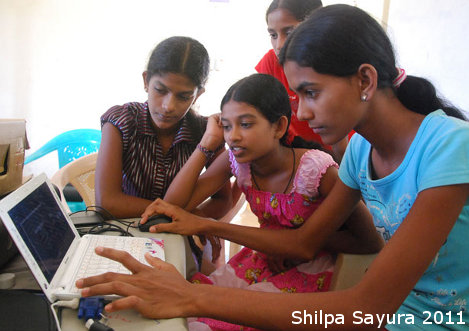Download Sinhala ICT Model Paper I for 2012
Download English ICT Model Paper I
What to Expect in 2012
The 2012 Paper will include more
databases, SQL, SSADM, data communications, Networks and Python
1. Types of Databases and their advantages
2. Database Normalization, ER & DFDs, 3NF
3. Software Development Life Cycle : Water Fall model with Feedback
4. SQL statements for CREATE, SELECT, UPDATE, DELETE and Joing Tables
5. Know the differences of SSADM , Systems Analysis Techniques
6. Data Communications Mediums and their applications in Telecom, Medicine
5. Sub netting of Class C, B and A
6. How Hosts of Multiple Networks Communicate ? Roles of Switches, Hubs, Routers and Bridges
7. OSI 7 Layer model, TCP/IP protocols and comparisons
8. Python String manipulation functions, Lists, Tuples, Dictionaries and Sets
9. Python syntax's main control structures, comments, indenting
10. Cloud Computing , Memory Management,
Ubiquitous computing, Argumented reality
Read Questions Carefully. Beginning to end and end to Begining
Sometimes they ask what is ? and some times what is not? Don't make a mistake.
In each question for MCQ there are at least 3 answers totally wrong. Find them first and eliminate
The last two will be tough to select from, hence refer to your theory knowledge
Good Luck ...
SPECIAL PAPER DISCUSSION
ON EVERY THURSDAY DURING
JULY & AUGUST 2012
Model Paper Answer Tips
Frequency division multiplexing (FDM)
The total bandwidth available to the system is divided into a series of non overlapping frequency sub-bands and assigned to each communicating source and user pair. Used in Analog. Modern telephone systems employ digital transmission, in which time-division multiplexing (TDM) is used instead of FDM.
Stereo FM transmission use FDM
Time-division multiplexing (TDM)
A digital (rarely analog) multiplexing in which multiple bit streams or signals are transferred simultaneously as sub-channels in one communication channel. But are physically taking turns on the channel sharing time slots.
Wavelength-division multiplexing (WDM)
Used in fiber-optic communications. Multiplexes a number of optical carrier signals onto a single optical fiber by using
different wavelengths (i.e. colours) of laser light. This technique enables bidirectional communications over one strand of fiber, as well as multiplication of capacity.
Code Division Multiplexing (CDM)
allows signals from multiple devices to be transmitted at the same time using one frequency band. This is accomplished
by using encoding user packets in sharing the channel. The receiver decodes and submit to intended user.
virtual private network (VPN)
a private computer network that interconnects remote networks using nternet. VPNs provide security through tunneling
protocols and security procedures such as encryption. A bank uses VPN securely connect the branch offices and ATMs
Voice over IP
(VoIP, or Voice over Internet Protocol)
delivery of voice communications and multimedia sessions over Internet Protocol (IP) networks like Internet. (Skype)
General packet radio service (GPRS)
packet oriented mobile data service on the 2G and 3G cellular communication system's global system for mobile
communications (GSM).
Order of Evaluation (Precedence rules) for Python operators.
All operators except the power (**) operator are evaluated from left to right
They are listed in the table from highest to lowest precedence.
operators included together within subsections, such as x * y, x / y, x // y, and x % y, have equal precedence.
http://www.informit.com/articles/article.aspx?p=459269&seqNum=11
Parentheses ( ... )
innermost level first
** * / // % + -
Exponents, Multiplication, Division, Addition, Subtraction
Python Lists are mutable
The syntax for accessing the elements of a list is the same as for accessing the characters of a string using the the
bracket operator. The expression inside the brackets specifies the index. Remember that the indices start at 0:
>>> a=[1,2,3]
print a[0] gives 1
a[0]=4
print a [0] gives 4
strings are not mutable
a="niranjan"
a[0] gives "n"
a[0]="k" gives an error
a=(1,2,3) is a tuple
a[0]=4 gives an error as tuples are not mutable
think python
Python sets
These are unordered collection of objects (mathematical set). They are not indexed like lists and tuples
Sets cannot have duplicate members. Sets also require that all members to be hashable. Any object that can be used as
a dictionary key can be a set member. Integers, floating point numbers, tuples, and strings are hashable;
The lists, dictionaries are not hashable
Integer Floating point operations
in python 20/5.0 is not 4
it is 4.0 as 5.0 is a floating point number
result get converted to floating point value




